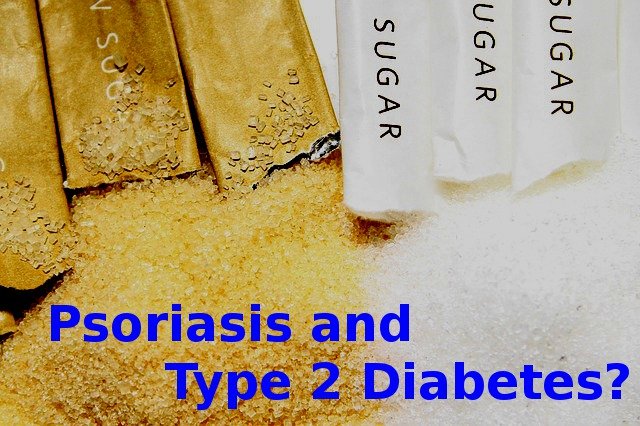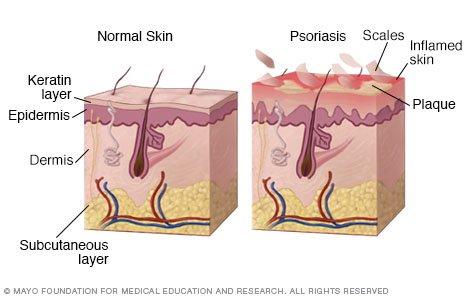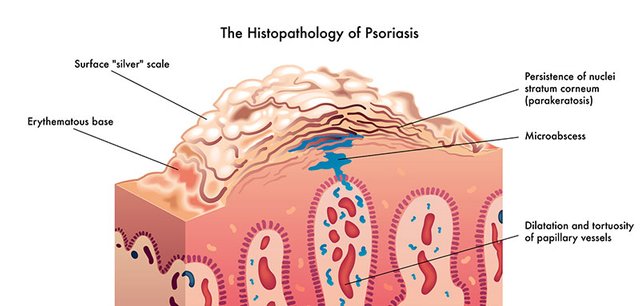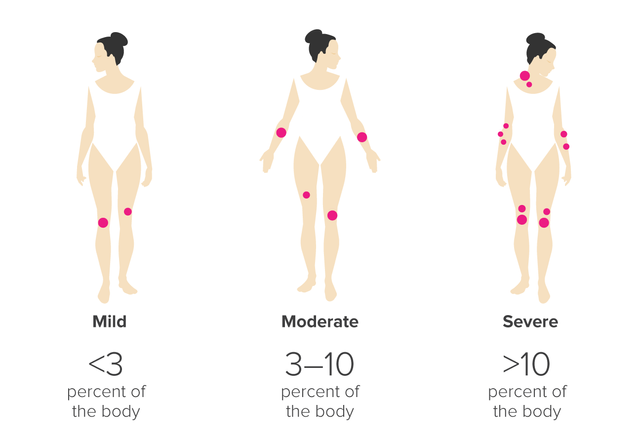Psoriasis has increased risk forType-2 Diabetes Mellitus
As I have already mentioned about the Diabetes Mellitus in the last post [here].For the development of Diabetes, there are various conditions. It has various risk factors that arises it. Since there are two types of diabetes:
- Type-1 Diabetes Mellitus
- Type-2 Diabetes Mellitus
According to the latest news, there is a condition called as psoriasis which will be talking later in this post. This condition has played a part of a role in developing the Type-2 Diabetes Mellitus. In the type 2 diabetes mellitus, the insulin level remains normal as usual but the sensitivity of the cell towards the insulin is absent. The glucose transporter plays a major role here. It becomes inactive in the type-2 Diabetes mellitus where the cell membrane doesn't respond to the insulin and become insulin resistance. Many risk factor prevails it such as Obesity, lack of exercise, Hypertension. Due to excess of fat, it releases fatty acids like adipokines. This causes some inflammation in the cell making insulin resistance. Due to this , there is increased number and size of pancreas Beta-cell causing hyperplasia and hypertrophy of the Beta-cell of pancreas.

Fig: Psoriasis related with Type-2 Diabetes mellitus (source)
According to the latest news, people with this psoriasis disease are risk to Diabetes mellitus type -2. These patients are not only to type-2 diabetes but also prone to rise in the skin disease severity. This is the first study to specifically examine how the severity of the disease can affect the patient's risk.
Psoriasis has been a serious medical condition in the United state affecting around 7.5 million people.
What is psoriasis ?

Fig: Simple Skin anatomy during Psoriasis (source)
Simply, it is understood as skin disease. It is a serious disease that has a affects the quality of life and the emotional well being of a person. The etiology if this disease is till now unknown. But, some study tells that the is caused due to multifactorial causation involving both environmental and genetic factors. It develops from the dys-regulation of the immune system. A condition where the immune system send faulty signals that makes the cells of the skin grow too quickly by producing some excessive keratinocytes and forming psoriatic plaque. Psoriatic plaque is the most common form of disease where the skin appears to be raised, red patched which is covered with a silvery white buildup of dead skin cells or scala. There often appears in the scalp, knees, elbows, mouth, genitals, nails and the lower back . Triggering activity is mainly due to the T-lymphocytes or various cytokines that generally activate them .

Fig: Detailed pathophysiology of Psoriasis (source)
To become activate, the inexperienced T-cell should go some interactions with the other different cell types. Inflammatory process begins when the antigen presenting cells like dendritic cells gets activated by the antigen in the skin. These dendritic cells passes through the lymph nodes and interacts with the inexperienced T-cells which makes antigen presentation and develop necessary simulator signals. This process results in the transformation of the T-cell to the activated memorized T-cell. This memorized activated cell remembers the antigen to which it has been exposed and fights against it when it enters the body. When there is cell proliferation , migration of T-cells to site of inflammation in the skin through circulatory system occurs. During this phase, there is the adhesion and trafficking of these cells involving some adhesion namely ICAM-1. The T-cell overflows and reaches to the surrounding tissue along with cytokines which plays an important role in the inflammatory cascade.

Fig: Severity of the Psoriasis (source)
Memorized T-cell secretes some chemical messengers like Interferon-gamma and TNF-alpha leading to keratinocytes hyperproliferation and deposition of psoriatic plaques. Interleukin-12 and Interleukin-23 are released by the dendritic cells and contribute in activating the T-cells which contribute in the infalmmatory processes.
Now, the psoriasis has improved on the recent researches. Undergoing investigation of the cause and the pathogenesis is still in research. Cure is done according to the inflammatory nature which persists by the inflammatory reactions.
About 40 percent of the people developing psoriasis have psoriatic arthitis, which is the form of a disease causing inflammation in the joints and the symptoms matches with the arthritis.

Fig: Psoriasis on the chest (source)

Fig: Psoriasis on the elbow (source)
Researchers investigated through the data measure in terms of body surface area (BSA) which gives the percentage of the body that is affected by the disease. In the United, States, BSA of more than 5% prevails in the 20% patient developing psoriasis. Diabetes was diagnosed in the 3.44% of the psoriasis group people and 2.44 of the non-psoriasis group of people.
Psoriasis occured in people by BSA of 2% who had risk for developing Diabetes than psoriasis by 21%.People who had more than 10% BSA affected by psoriasis had about 64% of risk in developing diabetes comparing with the non-psoriasis group.
A type of inflammation occurs in the psoriasis patients that makes insulin resistance. This shows that the psoriasis and diabetes shared a common genetic mutation .So health workers should be diagnosing the psoriasis BSA percent or high BSA percent patient rather than just psoriasis patient preventing diabetes.
So this is all for today's blog. Hope to see you on other blog post.
Thanks for giving a view to it !
With love,

khatisam4
Source:
(1) https://www.emedicinehealth.com/plaque_psoriasis/article_em.htm
(2) https://www.psoriasis.org/about-psoriasis
(3) https://www.medicinenet.com/psoriasis/article.htm
(4) https://www.psoriasis.org/about-psoriasis
Last Health Post:
Professor Gu developed Synthetic Beta-cell transplant for Diabetic Patients
Age-Related Nuclear Cataract can be reduced by Healthy Diets !
Discovery of MUC5B gene in hearing loss of Otitis MEdia with Effusion Patient
Wow!
It is amazing how these two ailments seem to share the same genetic markers and risk factors. This makes it very complex to prescribe treatments. People that suffers from these conditions will have to walk a very thin line in how they live their lifestyles, and their consumption of food.
Thanks for sharing.
Thanks for your read. !
ouchhh thanks for sharing information about this
Thanks for the reply @blazing !